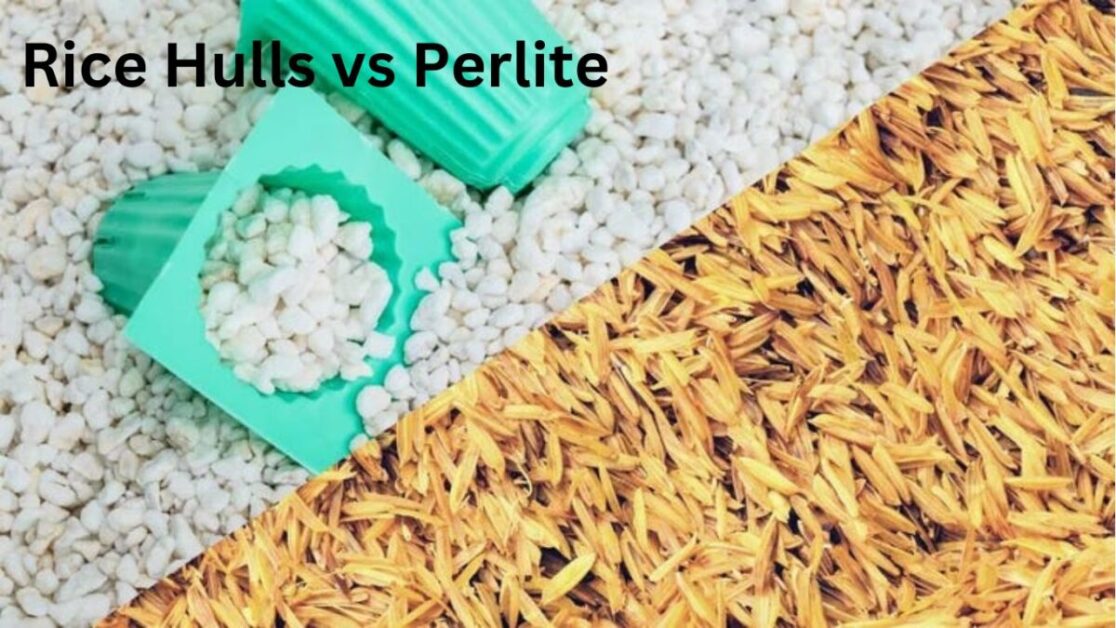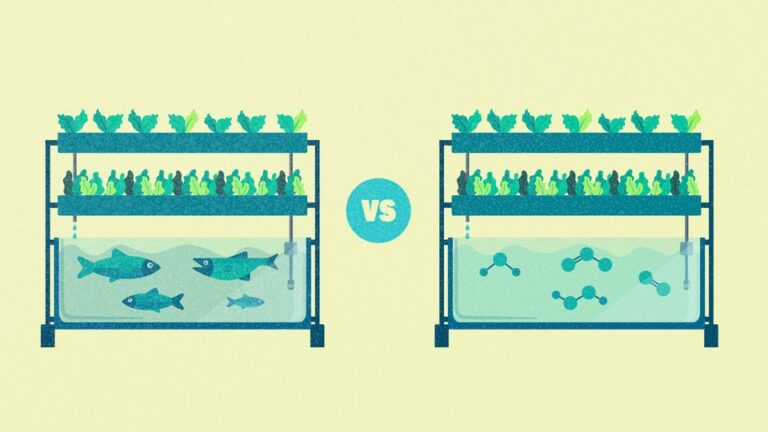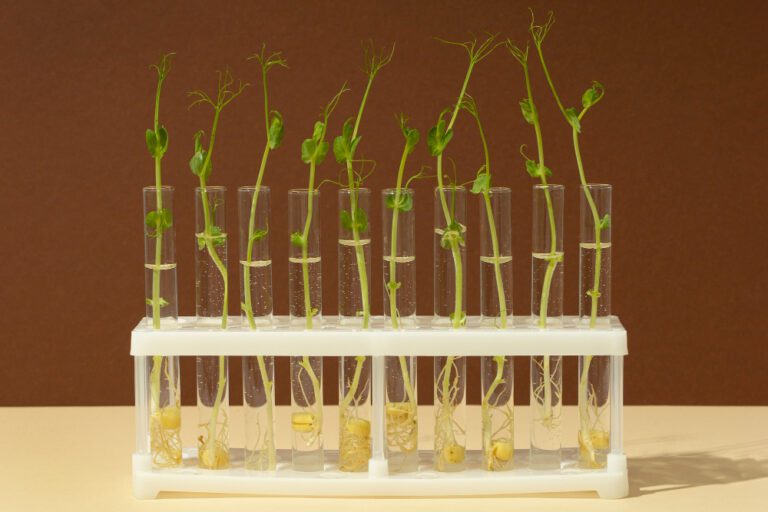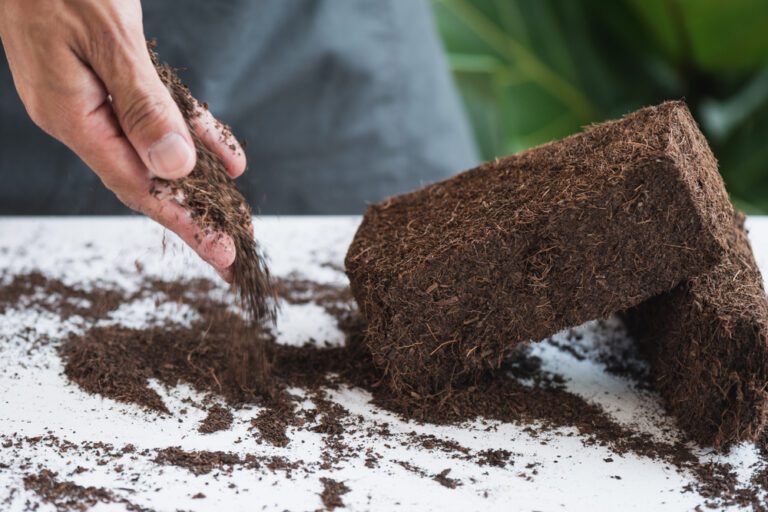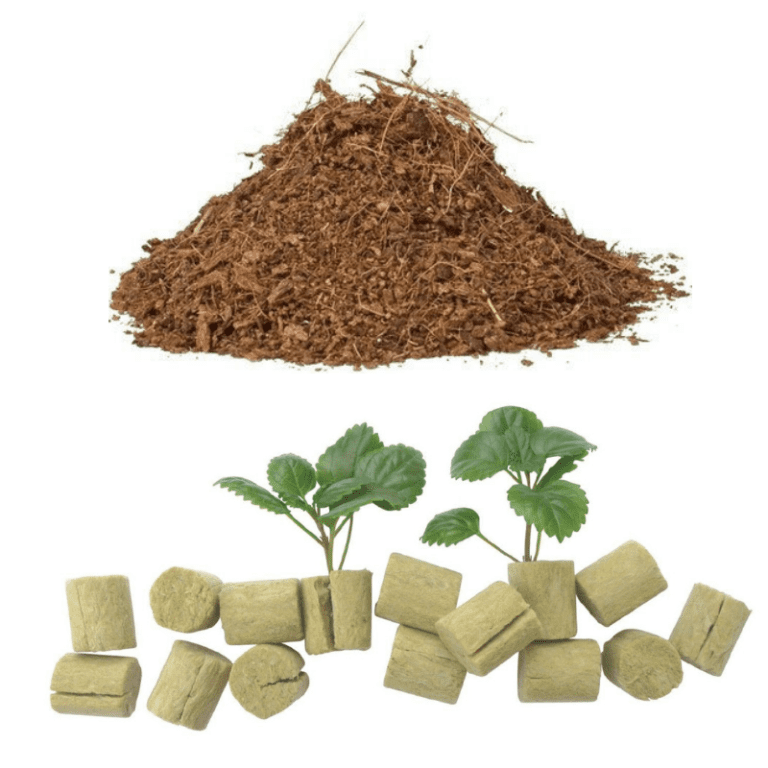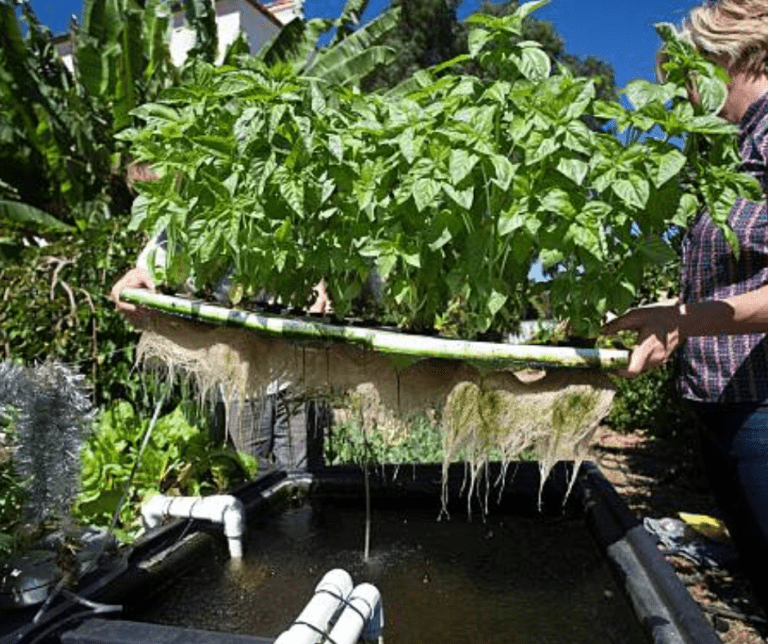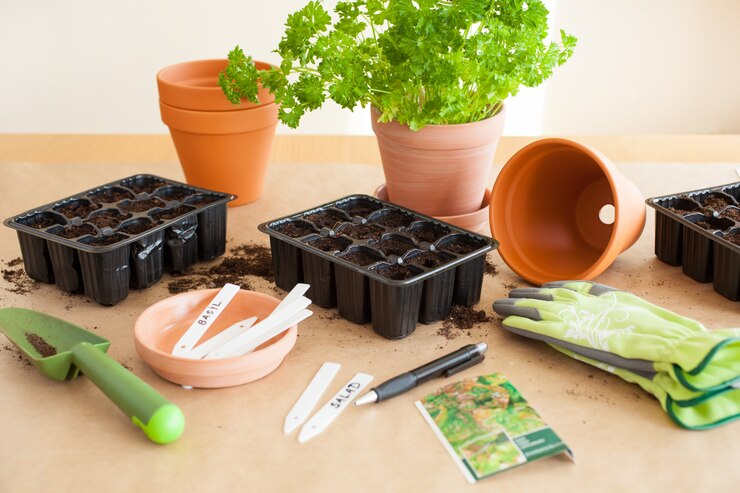Rice Hulls vs Perlite: Which 1 is the Better Choice for Hydroponics?
Table of Contents: Rice Hulls vs Perlite
Rice Hulls vs Perlite: Exploring the experiences and testimonials of hydroponic growers using
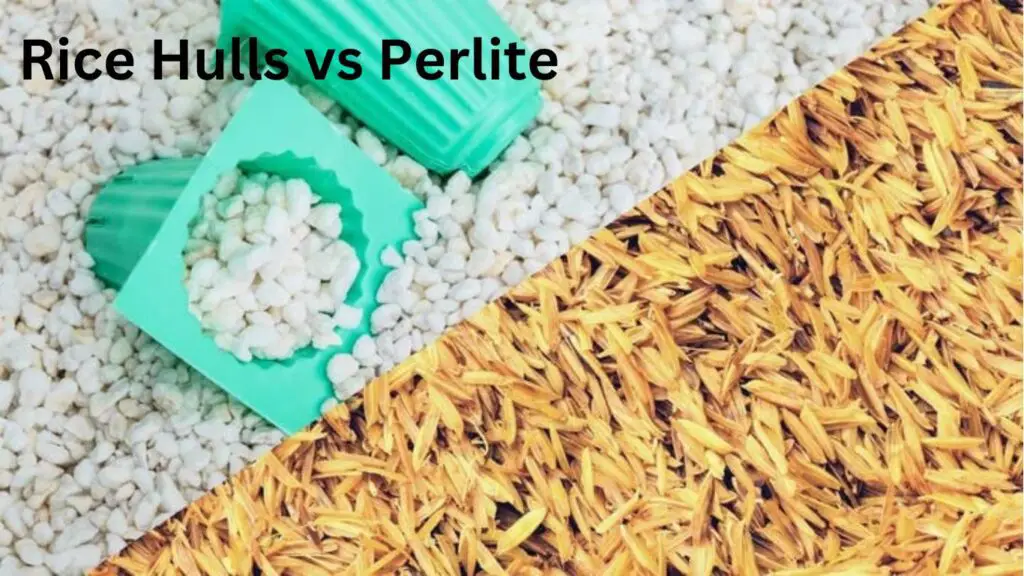
Rice Hulls vs Perlite: Hydroponic growing has gained significant popularity among gardening enthusiasts in recent years. As a method that involves growing plants without soil, hydroponics offers several advantages over traditional gardening. Not only does it allow for the cultivation of plants in areas with limited space, but it also maximizes crop yield and minimizes water usage.
One hydroponic grower, John Smith, shares his experience with this innovative gardening technique. He describes how hydroponics has revolutionized his approach to cultivation, stating, “I was amazed at the efficiency and control that hydroponics provides. I can grow my plants in a controlled environment, adjusting factors such as nutrient levels, pH, and lighting to optimize their growth. It has truly transformed the way I garden.”
Another testimonial comes from Lisa Johnson, who emphasizes the sustainability aspect of hydroponics. “I was initially drawn to hydroponics for its water-saving potential,” she explains. “With traditional soil-based gardening, water can be wasted through evaporation and absorption by surrounding soil. Hydroponics eliminates these issues, allowing me to use every drop of water efficiently and reduce my overall water consumption.
These testimonials from hydroponic growers highlight the diverse benefits of this growing technique. From increased control over plant growth to sustainable water usage, hydroponics offers a promising solution for gardening enthusiasts looking to optimize their cultivation practices. As we delve deeper into the experiences and testimonies of hydroponic growers, we’ll uncover more insights into the advantages and challenges associated with this innovative method of cultivation.
• Hydroponics allows for cultivation in limited space
• Maximizes crop yield and minimizes water usage
• John Smith emphasizes the efficiency and control of hydroponics
• Adjusting factors such as nutrient levels, pH, and lighting optimize plant growth
• Lisa Johnson highlights the sustainability aspect of hydroponics
• Water-saving potential compared to traditional soil-based gardening
• Eliminates wastage through evaporation and absorption by surrounding soil
• Every drop of water is used efficiently, reducing overall water consumption.
While I can’t provide real-time or specific testimonials, I can offer a general comparison between rice hulls and perlite based on commonly reported experiences in hydroponic growing as of my last knowledge update in January 2022.
Rice Hulls vs Perlite details in below
Rice Hulls:
- Aeration and Drainage: Rice hulls provide good aeration and drainage in hydroponic systems. They create air pockets in the growing medium, allowing oxygen to reach the plant roots.
- Renewable and Sustainable: Rice hulls are a byproduct of rice processing, making them a renewable and sustainable choice for hydroponic growers.
- pH Neutral: Rice hulls are generally pH neutral, which means they won’t significantly impact the pH of the nutrient solution.
Rice hulls, also known as rice husks than Rice Hulls vs Perlite
are the protective outer coverings of rice grains. In hydroponic and gardening contexts, rice hulls are used as a growing medium or amendment. Here are some benefits associated with the use of rice hulls:
- Aeration and Drainage: Rice hulls provide excellent aeration and drainage in growing media. The coarse and porous nature of rice hulls allows for the easy movement of air and water, preventing soil compaction and promoting healthy root development.
- Lightweight: Rice hulls are lightweight, which makes them easy to handle and incorporate into growing mixes. Their lightness also helps in preventing the overall growing medium from becoming too heavy.
- Renewable and Sustainable: Rice hulls are an agricultural byproduct, making them a renewable and sustainable choice for growers. Utilizing rice hulls can contribute to reducing waste from rice production.
- pH Neutral: Rice hulls are generally pH neutral. This means they have little impact on the pH of the growing medium, providing a stable environment for plant roots. This neutrality allows growers to have better control over the pH of their nutrient solutions.
- Insulation: Rice hulls have insulating properties, helping to regulate soil temperature. This can be particularly beneficial in regions with fluctuating temperatures, as it provides a buffer against extreme heat or cold.
- Organic Matter: While rice hulls themselves do not contribute significant nutrients to plants, they do add organic matter to the soil over time as they decompose. This can enhance the overall structure and fertility of the growing medium.
- Disease Resistance: Rice hulls are less prone to harbor diseases and pests compared to some other organic substrates. This can contribute to a healthier growing environment, especially in hydroponic systems.
- Hydroponic Systems: In hydroponic systems, rice hulls can be used as a substrate in various applications, such as in NFT (Nutrient Film Technique) systems or as part of potting mixes for container gardening.
It’s important to note that the benefits of rice hulls can vary depending on the specific application, the type of plants being grown, and the overall growing conditions. Experimentation and observation in your particular gardening setup will help determine the effectiveness of rice hulls for your specific needs.
Rice Hulls vs Perlite
Perlite:
- Lightweight: Perlite is extremely lightweight, promoting good aeration in the growing medium. It helps prevent compaction and allows the roots to access oxygen easily.
- Inert and Sterile: Perlite is inert and sterile, reducing the risk of introducing pests or diseases into the hydroponic system.
- Neutral pH: Like rice hulls, perlite is pH neutral, which is beneficial for maintaining stable nutrient solution pH.
Perlite is a popular and versatile growing medium in horticulture and hydroponics: Rice Hulls vs Perlite
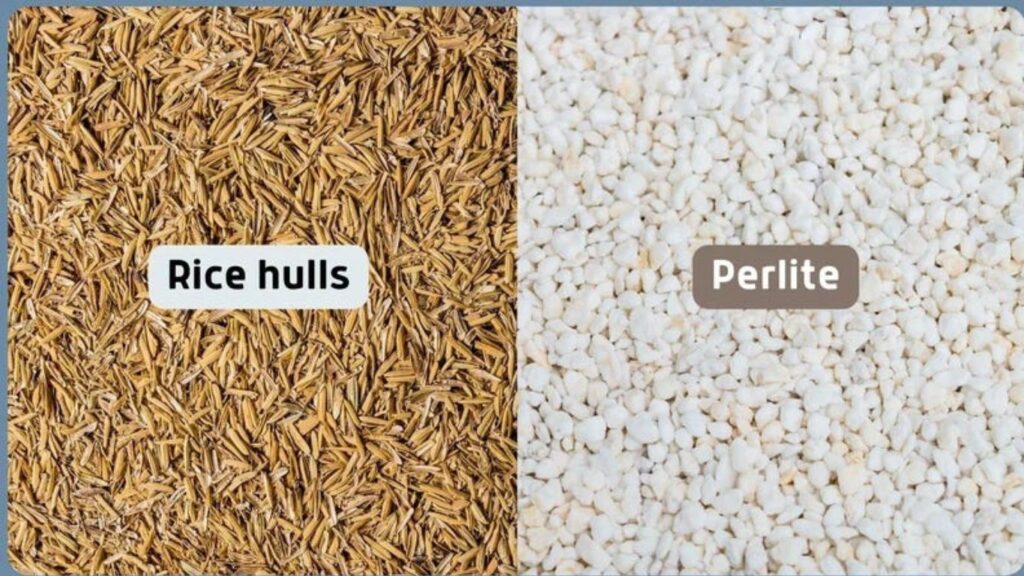
Here are some of the key benefits of using perlite:
- Lightweight: Perlite is extremely light, which helps to prevent compaction in growing mediums. Its light weight also makes handling and transporting bags of perlite easy.
- Aeration: Perlite provides excellent aeration in the growing medium, creating air pockets that allow for the optimal exchange of oxygen and carbon dioxide at the root zone. This is crucial for healthy root development and overall plant growth.
- Drainage: Perlite has excellent drainage properties, preventing waterlogged conditions in the root zone. Proper drainage is essential for avoiding root rot and other issues related to overwatering.
- Inert and Sterile: Perlite is an inert material, meaning it does not react with other elements in the growing medium. It is also sterile, reducing the risk of introducing pests, diseases, or unwanted microorganisms into the growing environment.
- pH Neutral: Perlite is pH neutral, which means it won’t significantly affect the pH of the nutrient solution or the growing medium. This allows for better control over the pH levels in hydroponic systems.
- Reusable: Perlite can be reused for multiple growing cycles if properly sterilized between uses. This makes it a cost-effective option in the long run.
- Insulation: Perlite provides some insulation to the root zone, helping to maintain a stable temperature. This can be beneficial in both warm and cool climates.
- Versatility: Perlite can be used on its own or mixed with other growing media to create a customized blend that meets specific plant and environmental requirements.
- Hydroponic Applications: Perlite is commonly used in hydroponic systems, providing support for plants in the absence of soil. Its lightweight nature makes it suitable for various hydroponic setups.
- Improves Soil Structure: When added to garden soil, perlite improves soil structure by preventing compaction and promoting aeration. This is beneficial for traditional gardening as well.
While perlite offers numerous benefits, it’s essential to consider the specific needs of your plants and your growing system. Additionally, proper precautions should be taken, such as wearing a mask during handling, as perlite dust can be an irritant to the respiratory system.
Experiences and testimonials may vary based on the specific needs of the plants being grown, the hydroponic system used, and the preferences of individual growers. Some growers may prefer one substrate over the other based on factors such as availability, cost, or environmental considerations.
When considering which to use, it’s essential to factor in the specific requirements of your plants, the overall hydroponic system design, and your personal preferences. Some growers even use a combination of different substrates to achieve a balance of qualities such as aeration, drainage, and water retention.
If you are looking for more recent and specific testimonials, it would be beneficial to explore online hydroponic forums, social media groups, or local gardening communities where growers often share their experiences and recommendations.
Below is a simple comparison table highlighting some key characteristics of Rice Hulls vs Perlite:
| Characteristic | Rice Hulls | Perlite |
|---|---|---|
| Composition | Byproduct of rice processing | Naturally occurring volcanic glass |
| Weight | Moderately lightweight | Extremely lightweight |
| Aeration | Provides good aeration and drainage | Excellent aeration, prevents compaction |
| Drainage | Good drainage properties | Excellent drainage, prevents waterlogging |
| pH Level | Generally pH neutral | pH neutral |
| Sustainability | Renewable and sustainable | Mined, but can be recycled and reused |
| Sterility | May contain some impurities | Sterile, reduces the risk of pests and diseases |
| Insulation | Limited insulation properties | Provides some insulation to the root zone |
| Reuse Potential | Can be reused if properly treated | Reusable if sterilized between uses |
| Cost | Generally cost-effective | Affordable |
| Hydroponic Use | Commonly used in hydroponic systems | Widely used in hydroponics |
| Garden Soil Improvement | Can improve soil structure | Improves soil structure, prevents compaction |
It’s important to note that the suitability of either rice hulls or perlite depends on the specific requirements of the plants being grown and the preferences of the grower. Growers often consider factors such as water retention, aeration, and the overall growth environment when choosing a growing medium.
Here are two tables comparing Rice Hulls vs Perlite based on various factors commonly considered by growers:
Table 1: Physical and Environmental Characteristics on Rice Hulls vs Perlite
| Characteristics | Rice Hulls | Perlite |
|---|---|---|
| Weight | Moderate | Very Lightweight |
| Aeration | Good | Excellent |
| Drainage | Good | Excellent |
| Density | Moderate | Very Low |
| Renewability | Renewable | Non-renewable (mined) |
| Sustainability | Generally sustainable | May raise environmental concerns depending on mining practices |
| pH Neutral | Generally pH neutral | pH neutral |
| Sterility | May require sterilization | Sterile |
| Insulation | Limited insulation | Provides some insulation |
Table 2: Use and Application Considerations: Rice Hulls vs Perlite
| Considerations | Rice Hulls | Perlite |
|---|---|---|
| Hydroponic Systems | Yes | Yes |
| Container Gardening | Yes | Yes |
| Soil Improvement | Yes | Yes |
| Reusability | Limited | Reusable with proper care |
| Cost | Moderate | Moderate |
| Availability | Depends on rice production | Widely available |
| Handling | Lightweight but may decompose over time | Very lightweight, dusty (requires caution during handling) |
| Customization | Can be mixed with other substrates | Versatile and can be mixed with other growing media |
These tables provide a general overview of the characteristics and considerations for choosing between rice hulls and perlite. Growers should assess their specific needs, plant requirements, and environmental considerations when deciding on the most suitable growing medium for their purposes.
The use of Rice Hulls vs Perlite in gardening and hydroponics can vary based on the specific needs of plants, growing conditions, and personal preferences. Here’s a general guide on how to use Rice Hulls vs Perlite in different applications:
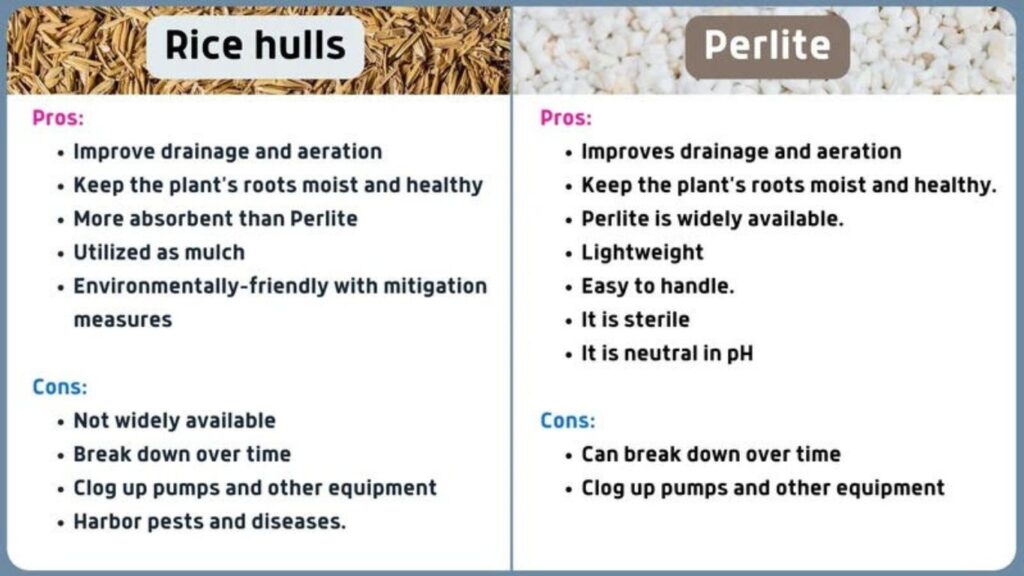
Rice Hulls:
- Hydroponic Systems:
- Blend rice hulls with other growing media like coconut coir, vermiculite, or perlite to create a well-aerated hydroponic substrate.
- Use as a standalone medium in systems like Deep Water Culture (DWC) or Flood and Drain (Ebb and Flow).
- Container Gardening:
- Mix rice hulls with potting soil to improve aeration and drainage in container gardens.
- Adjust the ratio based on the specific needs of your plants – more rice hulls for better drainage, and less for moisture retention.
- Soil Improvement:
- Incorporate rice hulls into garden soil to enhance aeration and break up compacted soils.
- Mix with compost or other organic matter to improve overall soil structure.
- Seed Starting:
- Use rice hulls as a seed starting medium to provide a light and well-draining environment for germination.
- Combine with perlite or vermiculite for an even lighter and more aerated mix.
Perlite:
- Hydroponic Systems:
- Include perlite in hydroponic substrates for improved aeration and drainage.
- Use in various hydroponic systems like Drip, NFT (Nutrient Film Technique), or Aeroponics.
- Container Gardening:
- Mix perlite with potting soil to enhance aeration, drainage, and prevent compaction in containers.
- Adjust the ratio based on the specific needs of your plants – more perlite for better drainage.
- Soil Improvement:
- Amend garden soil with perlite to improve aeration and drainage.
- Mix perlite with heavier soils to lighten the texture.
- Seed Starting:
- Use perlite as a component in seed starting mixes for its lightweight and sterile properties.
- Combine with peat moss or coconut coir for an effective seed germination medium.
General Tips:
- Mixing Ratios:
- Adjust the ratio of rice hulls or perlite in your growing medium based on the specific needs of your plants and the environmental conditions.
- Sterilization:
- Sterilize rice hulls if using them in situations where disease transmission is a concern. Perlite is sterile by nature.
- Handling:
- Wear a mask and gloves when handling perlite, as the dust can be an irritant. Rice hulls, being heavier, are generally less dusty.
- pH Monitoring:
- Regularly monitor and adjust the pH of your growing medium, especially when using rice hulls or perlite, which are generally pH neutral.
Experiment with different combinations and observe how your plants respond to find the optimal mix for your specific growing conditions and preferences.
How does hydroponic growing differ from traditional soil-based gardening?
Hydroponic growing is a soilless method of cultivation that involves the use of nutrient-rich water solutions to feed the plants directly. Traditional gardening relies on soil as the primary medium for nutrient delivery.
What are the advantages of hydroponic growing over traditional gardening?
Hydroponic growing offers several advantages, such as faster growth rates, higher yields, and greater control over environmental factors. It also conserves water and requires less space compared to traditional gardening.
Can any plant be grown hydroponically?
While most plants can be grown hydroponically, some thrive better in this system than others. Leafy greens, herbs, tomatoes, cucumbers, and strawberries are popular choices for hydroponic cultivation.
Do hydroponic systems require special equipment or expertise?
Hydroponic systems do require specific equipment, such as containers, pumps, and nutrient solutions. Additionally, some level of knowledge and expertise in plant nutrition, pH balancing, and system maintenance is beneficial for successful hydroponic growing.
Is hydroponic growing organic?
Hydroponic growing can be organic if the nutrient solutions used are derived from organic sources. However, it is important to note that the absence of soil in hydroponics challenges the traditional definition of organic farming.
Are hydroponically grown plants as nutritious as traditionally grown plants?
Yes, hydroponically grown plants can be just as nutritious, if not more so, as traditionally grown plants. The controlled environment of hydroponics allows for precise nutrient delivery, resulting in plants with optimized nutrient content.
How do hydroponic growers manage pests and diseases without the use of soil?
Hydroponic growers employ various methods to manage pests and diseases, including biological controls, such as beneficial insects or nematodes, as well as integrated pest management techniques. Regular monitoring and maintaining a clean growing environment are also essential.
Can hydroponic systems be used for large-scale commercial farming?
Absolutely. Hydroponic systems are increasingly being utilized for large-scale commercial farming due to their potential for higher yields, year-round production, and efficient use of resources. This method is particularly popular in urban farming and greenhouse operations.
Is hydroponic growing more sustainable than traditional farming methods?
Hydroponic growing is often considered more sustainable than traditional farming methods due to its efficient use of water and space. However, the sustainability of hydroponics also depends on factors such as energy consumption and the sourcing of nutrient solutions.
What are the main challenges faced by hydroponic growers?
Some common challenges faced by hydroponic growers include maintaining proper nutrient balance, preventing system failures, managing pests and diseases, and ensuring optimal environmental conditions such as temperature and humidity. Continuous monitoring and adjustment are necessary to overcome these challenges.

